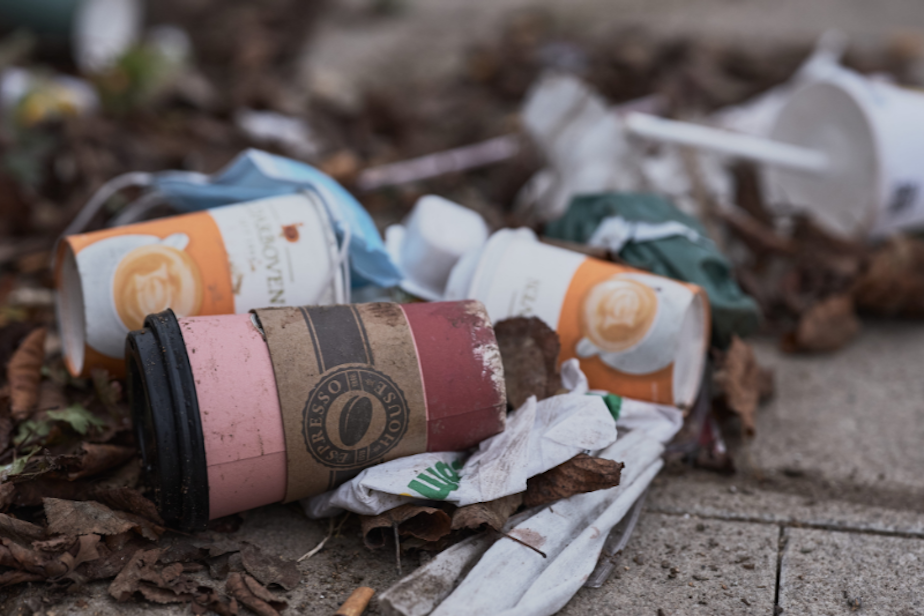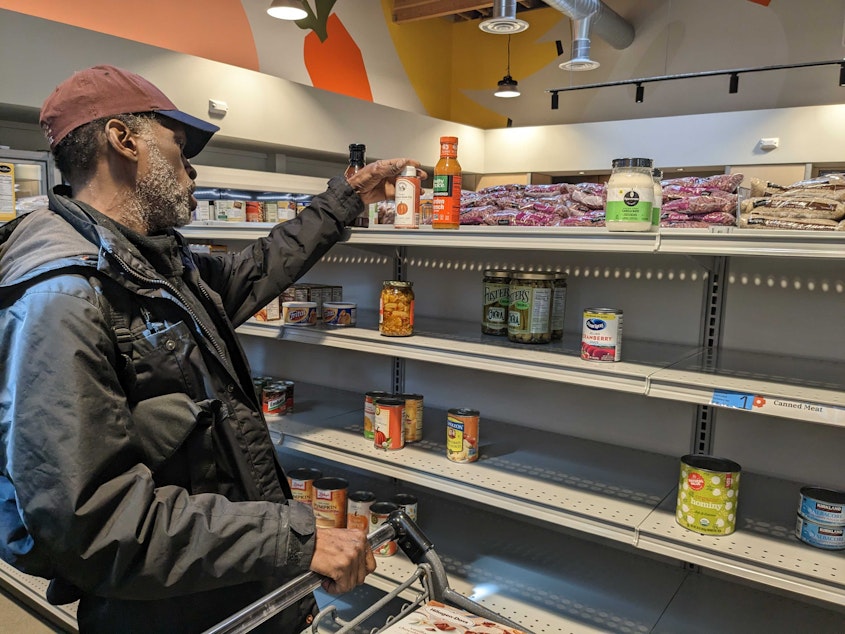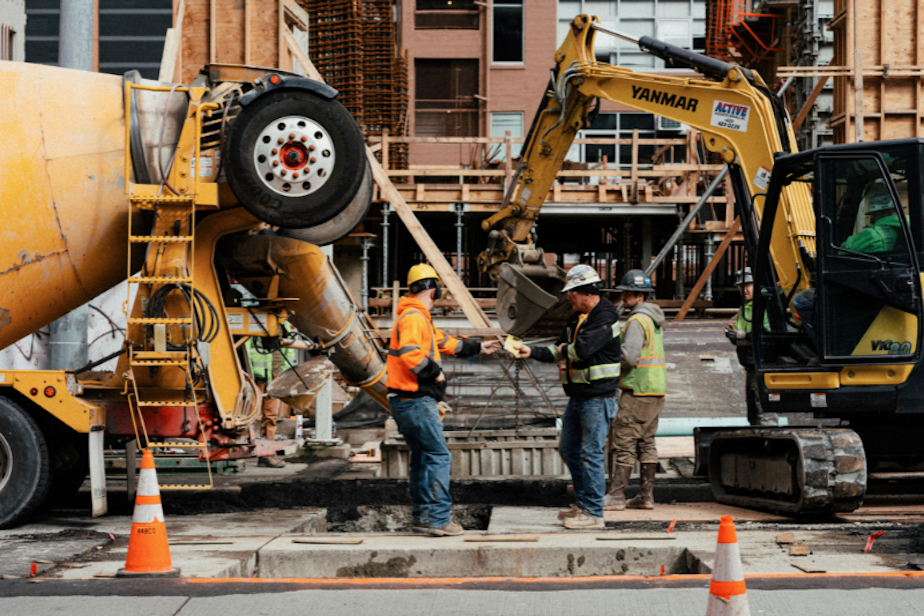How Seattle plans to ditch disposable coffee cups: Today So Far

- Would you take a free travel mug from your local coffee shop ... if you promised to return it?
- KUOW has a new podcast to help catch you up on the day's news.
- Our region is experiencing the lowest tides of the year right now.
This post originally appeared in KUOW's Today So Far newsletter for June 5, 2023.
Would you take a free travel mug from your local coffee shop ... if you promised to return it?
Keep in mind, the mug is stainless steel, so it will keep your drink hot longer. Also, you wouldn't be using a paper to-go cup, which, as I see it, has two benefits: less trash, and you won't have that issue where coffee slowly drips on you from that plastic lid ... no matter how tight it is. This is the main idea behind an emerging effort in Seattle to nix disposable coffee cups, and replace them with reusable travel mugs.
This is how it works. Participants put their card on file. At a coffee shop, they take their coffee order in a genuine, fully functional, stainless steel travel mug (that hopefully doesn't drip from the lid). They return the mug to any participating coffee shop, pick up another mug with a new order, and repeat. If they don't return the mug within two weeks, they get charged $15 and essentially have purchased it (though they can still get a refund if they return it within 45 days). The main idea is to just keep exchanging the mugs for free. The effort is the product of Seattle Public Utilities.
Seattle already has similar programs in place. When Nina and I saw Sunny Day Real Estate at The Moore back in March, her beer came in a hard plastic cup with a lid. Folks then returned the cups to a cart. The coffee mug proposal takes this notion to a whole new level, where customers take the mugs to work, home, the bus, the bathroom, wrestling matches, the ferry, fishing, barroom brawls, bingo, gardening, to dinner with parents while they criticize your life choices, and all the other usual places you find yourself.
KUOW's Amy Radil caught up with customers giving this system a try at Tailwind Café on Capitol Hill. Read that story here.
Sponsored
I have some close-to-home news for you. KUOW has a new podcast to help catch you up on the day's news. If you haven't yet, look up "KUOW Newsroom" in your podcast app. That's where KUOW has historically been dumping its news briefs for a while now. I probably shouldn't say this, and some folks are going to get irate with me, but this hasn't been the best presentation of the good work that folks at KUOW have been doing. That's why, starting today, KUOW's newsroom podcast feed will look a lot different.
A daily recap of the news, including all the reporting from throughout the day, will be posted around 5 p.m., all in one episode. Now that's what I call a podcast. This is totally a nerdy, podcaster perspective, but I'm personally pretty stoked about this development and folks in our newsroom deserve a nice pat on the back for this. Here's the thing: You're still going to get all of KUOW's reporting on the radio, but that signal only goes so far. KUOW.org reaches people around the globe. I get feedback from folks across the USA for simple blog posts (yes, KUOW has a blog and it's pretty awesome). TSF readers know that we have our own little newsletter community here. I've heard from readers spanning Seattle to Trinidad and Tobago, all reading for different reasons. A daily podcast rounding up KUOW's news is another great way for folks far and wide to hear us.
I know, I know. I'm the journalist who likes to talk about science, the future, Star Trek, etc. So when KUOW takes a step toward the future (aka podcasts), I get excited. It's one of a few steps the station has been taking recently. So go find "KUOW Newsroom" in your podcast app, and take this step with us.
If you have a chance today and tomorrow, go down to the shoreline. Our region is experiencing the lowest tides of the year right now.
“These low tides are a great opportunity to go out and see environments, habitats, places that are typically covered with water, that we don't typically get to visit unless we are willing to snorkel or scuba dive,” Washington Sea Grant oceanographer Ian Miller recently told KUOW's John Ryan.
Sponsored
The tides are expected to drop about four feet below the usual low tide. That means we can get a temporary peek at acres of tideland that is usually under water. It's also an opportunity for the Swinomish Tribe to construct certain parts of its emerging clam garden near Anacortes. It's the first modern clam garden in the United States. For that story, read here.
AS SEEN ON KUOW

Both the U.S. House and now the Senate have approved the federal debt ceiling agreement, but not everyone’s happy about the deal. A dozen Washington organizations that work with low-income families are decrying cuts that are critical to food and anti-poverty programs. As of April, more than 900,000 people in Washington are on food assistance. (Kate Walters / KUOW)
DID YOU KNOW?
Sponsored
The pandemic delivered a massive blow to Nike. Footwear analyst Chris Burns recently told NPR that Nike is in an odd position currently, where demand and supply are about equal.
"Nike, when you walk into the store, the Nike wall is just cluttered. Where a shelf used to have one shoe turned to the side, so you can see it really well, there's three or four shoes on one shelf at a time. It's just cluttered. Walk into a Foot Locker and there are just boxes inside of the store space in some instances, because there is so much inventory."
Burns explains that Nike hit a growth spurt in 2017, but then started a program called "edit to amplify," which made it focus on the product that sold the best, so there were just a lot of different versions of the same popular shoes. At the same time, there was no real innovation, which has led to its current slump, according to Burns. He doesn't think Nike can pull itself out of the slump as easily as it has in the past.
Nike is a Northwest company. It's headquarters are in Beaverton, Ore. just outside of Portland. When the company began in 1964, it wasn't called Nike. It was called Blue Ribbon Sports. It took on the name Nike (the Greek goddess of victory) in 1971. In the '60s, founders Phil Knight and Bill Bowerman started the company to sell a Japanese brand of running shoes out of the trunk of their car at University of Oregon games. The business was successful. They opened their own stores. In the 1970s, Knight began designing a shoe with the idea of making something lightweight that could grip the ground better. At one point, he used his wife's waffle iron to mold some rubber, and the shoe took off from there. It was initially called the "waffle trainer." It was also called the "moon shoe" since the tread sort of resembled the footprints astronauts left on the moon. From there, Nike grew to be the company we know today.
ALSO ON OUR MINDS
Sponsored

Amazingly, the U.S. job market continues to roar. Here are the 5 things to know
The USA's job market remained red hot in May with 339,000 added jobs. It was a number that blew past expectations. Analysts had forecast around 190,000 jobs would be added. Also, the positive job growth for March and April were revised even higher, by a total of 93,000 jobs. Robust job growth is good for the economy, but it could also complicate the Federal Reserve's effort to fight inflation.

